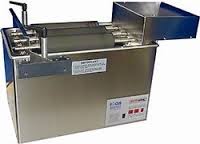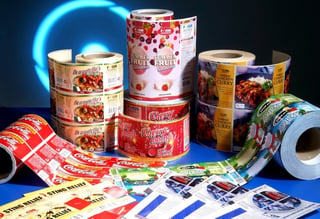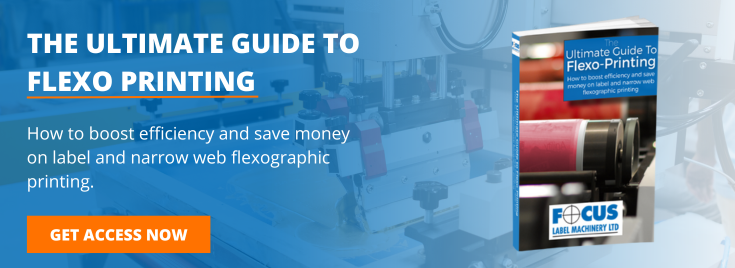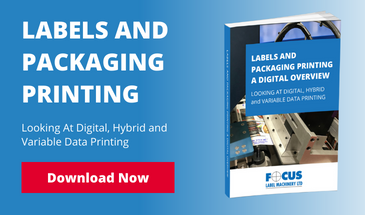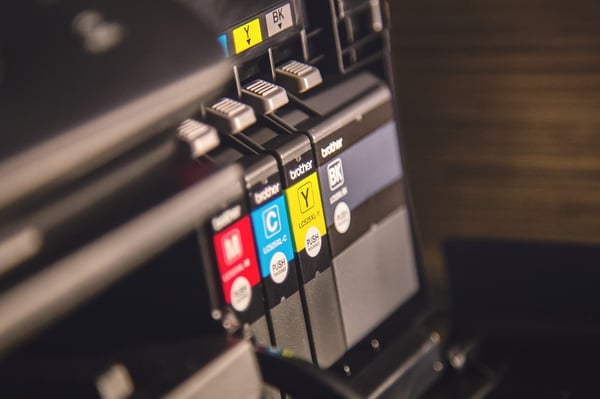
In today's highly competitive environment an ever increasing creativity in labels & packaging design innovations is paramount. The flexographic print process has enjoyed a period of continual development, elevating its reproduction capabilities far beyond what has traditionally been possible, and putting it in the same perceived level of gravure and offset printing. This has been possible thanks to the recent advancements in Press design, Printing Plate and ink technology. Anilox Roll technology has had to adapt to these advances itself and flexo Printers can challenge both Offset & Gravure quality. It is vital that printers not only understand their Anilox screen specifications, i.e., line count and volume but they must also understand their Anilox engraving type and cell geometry to maximize Anilox efficiencies. Line count provides definition and cell volume colour strength and density; however the cell shape and engraving geometry is crucial to maximize the Anilox ink-transfer properties.
So What Makes An Anilox Roll?
The 60 degrees hexagonal pattern has been until recent years the most common engraving in Anilox rollers. The reasons behind its standardization had been its performance advantages over previous cell patterns namely, 45 and 30 degrees engravings.
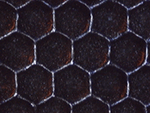 60 deg. Hexagonal engraving
60 deg. Hexagonal engraving
Over 2000 years ago Greeks mathematicians first debated the honeycomb as the most equal way of dividing any given area, what was known as the “Honeycomb Conjecture”. In 1999 mathematician Thomas C Hales proved that a regular hexagonal grid or honeycomb is the best way to divide a surface into regions of equal area with the least total perimeter.
The 60 degrees hexagonal pattern allows for more cells to be compacted in an area and provides the most efficient distribution of volume. There is less wasted space (less land area) if compared to diamond shape patterns (traditional 45 deg. engraving). This is the reason, the most uniform distribution of ink of the 60 deg hexagonal engraving became the norm in flexo printing.
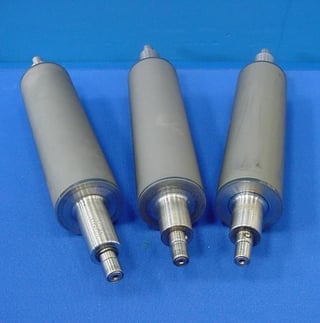
However, the hexagonal 60 deg pattern has important limitations with regard to ink release and ink flow. The 60 deg pattern consists of millions of individual hexagonal cells engraved across the surface of the Anilox roll. With closed-cell configuration air gets trapped with every rotation causing turbulence within the ink. This turbulence causes micro foaming and uneven laydown of ink to the plate and substrate. Micro foaming will be seen as pin holing in the print. Anilox Roll manufacturers have developed a number of alternative cell shapes to reduce this and a number of other issues often seen in fleoxgrahic printing.
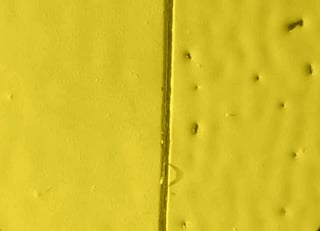
Colour Density
At high speeds we always see a loss of colour density, this is caused by the inability of the closed hexagonal cells to fully refill with ink in each revolution. Poor ink release is another major restriction, due to its conical profile, the 60 deg. cell only releases 60 to 70 percent of its total volume. Problems arise when the unused ink congeals or dries, plugging the cells and causing print inconsistencies.
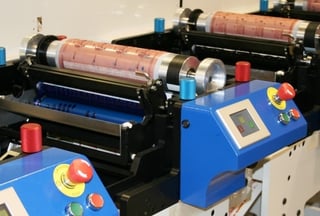
Things have moved on and todays advanced laser technology has enable Anilox suppliers to develop new engraving patterns that has surpassed the performance advantages of the conventional 60 degrees hexagonal pattern. In this article we will uncover them all and explain their main advantages and how they can help to bring the print quality in flexo to the same level of offset and gravure printing.
Solid And Combination Print
With solid and combination print MaxFlo+ is the best option. The great ink release properties of this engraving ensure enough volume is delivered to achieve high dense solids and extremely clean vignettes by keeping a high line count specification.
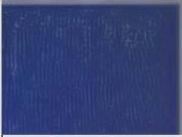
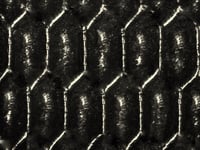
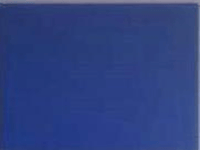
Printed with 360 LPI x 60 deg Anilox maxflo/Maxfo + Printed with 450 LPI maxflo
Depending on the type of substrate and ink system, the Anilox specification and engraving type might be different. Having well defined print targets with tolerances will enable your Anilox supplier to recommend the best Anilox specification for your particular print conditions.
With UV inks MaxFlo+ is successfully used for combination printing with volumes ranging from 6-7cm3/m2 but still keeping a high line count of 800-900LPI. The channel shape improves the ink flow and reduces aeration which results in significant less pin holing or absence of voids in the print which is the main factor that reduces measured ink density.
In corrugated board typically the cell volumes required for combination print are higher as it is the minimum print dot (4% and above). In these cases, a volume range between 7-9 cm3/m2 has been successfully used. Again MaxFlo+ enables corrugated board printers to use higher Anilox specifications and still maintain a high and consistent ink release. This will not only produce finer graphics but also improve ink lay down of solid print areas which will have a smoother and more uniform appearance with less mottled coverage.
HD Flexo Printing
Recent innovations in all press components continue to raise the bar in flexo printing, allowing converters to match or exceed the print quality of gravure and offset. The demand for higher quality has seen HD Flexo becoming the new key driver within the flexo industry. Plate and ink technology in conjunction with the new Anilox screen developments have made this possible.
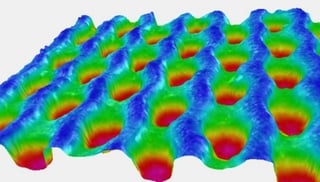
The latest laser technology, as new fibre optics have enabled Anilox suppliers to engrave line counts in excess of 2000LPI compared to the maximum of 1200LPI by CO2 lasers. The narrower beam width has made the dramatical increase in line count possible. The new lasers also come with custom software that provides the ability to manipulate and control laser engravings to unprecedented levels. This allows the Anilox supplier to custom design sophisticated cell shapes that offer outstanding ink release properties at ultra-fine line counts. The second factor has been the changes in ink flow and constitution. The new finely ground ink pigments allow for greater colour strength at lower cell volumes.
Advances in Printing Plate technology has played an important part as the new digital HQ or HD plates have allowed for an unprecedented refinement of the plate screen. The constitution of a HD plate is very different than that of a conventional CTP plate. It’s made up by a number of variable dot sizes and support dots on the plate (Fig. 4), this allows for plate screens with high LPI and highlight dots that are less than 1%. Before implementing this plate technology is crucial that the Anilox specification is considered for this technology to work.


Working With Your Press & Anilox Supplier
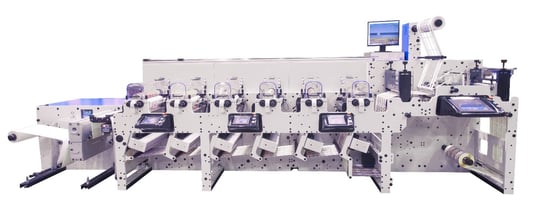
Your Anilox supplier will need to know the type of ink, substrate, plate DPI and target minimum dot percentage. With this information, your Anilox supplier will be able to make a successful recommendation.
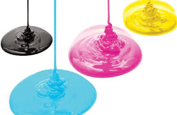
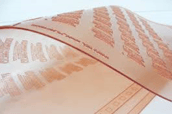
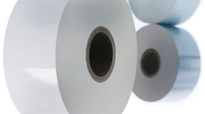
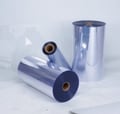
Consistency and repeatability of HD process print are critical. Due to the finer Anilox required, we recommend the use of ProFlo for HD printing. ProFlo is a high performance engraving specifically designed for ultra-fine screen specifications. It has an improved cell profile that provides a more consistent and controlled ink lay-down to the plate, This high-release cell offers as much as 15 percent additional ink, compared with conventional 60 degrees engravings, enabling the Anilox manufacturer to produce an engraving that will deliver the required colour densities at finer line counts.
Keeping the Anilox cell opening equal to or less than the minimum dot diameter will ensure you can achieve the desired quality of clean printing. This will ensure your anilox will deliver the right amount of ink to your plate and not over ink your minimum dots, avoiding what is sometimes referred as “dirty printing.”
The line count and volume will be selected in relation to the aforementioned print parameters but for 175-200LPI HD print the most standardise line counts and volumes range from 1200LPI to 1400LPI with volumes ranging from 3.5 to 2.0cm3/m2 in wide and narrow web printing.
Colour Density : Comparison bewteen conventional 60 deg. & latest ‘Proflo’ engraving with higher screen count, indicating improved ink flow .

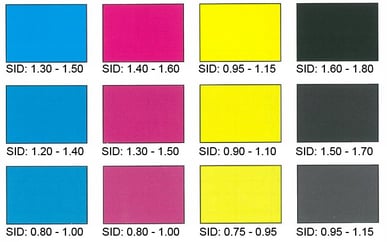
| Density Comparison Printed using same ink and print conditions | ||
|
900 LPI 3.8cm3/m2 Anilox 60 deg. hex |
1200LPI x 3.5cm3/m2 ProFlo |
|
| C | 1.15 | 1.35 |
| M | 1.25 | 1.4 |
| Y | 0.90 | 1.0 |
| K | 1.35 | 1.5 |
Fixed Palette
Demand for shorter packaging production runs for targeted campaigns and product variations are increasing. The packaging converter needs to meet these challenges in a time and cost effective way.
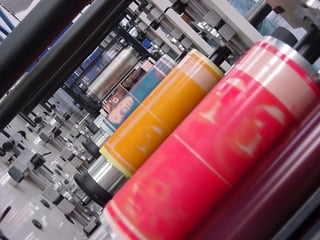
One solution to the drive for reduced costs is fixed palette printing, this technique uses only CMYK plus orange, green and violet or red green and blue, avoiding the need for Pantone colours. However requires complete stability of the printing process and that includes the Anilox.
Fixed palette or Expanded Colour Gamut (EGC) present some challenges to the Anilox supplier as consistency of all the print variables are fundamental in this technique. Whilst the Anilox volume is important in every application it becomes more critical in fixed palette printing. This means adherence to volume tolerances and rigorous measurement of the Anilox as well as the use of stable ink with a consistent viscosity throughout the printing process.
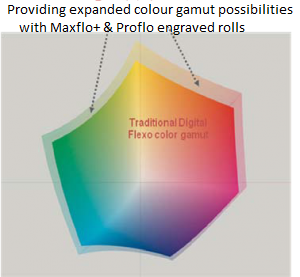
The Anilox must provide a highly consistent and uniform volume of ink to the plate. Improving ink transfer efficiency from the Anilox to the plate is vital for the success of this technique. This is why MaxFlo+ and ProFlo have proven to be the best choice of Anilox engravings for ECG. The high release engravings provide a more efficient transfer to the plate, increasing the density throughout the full tonal range which widens the available range of colours and increases the process colour gamut (Fig.6).
The best way to determine the most suitable line count and volume for the 4 or 7 colours process, would be to test through a banded Anilox roller. Depending on the substrate and inks used, for the four colour process, the recommended Anilox line count will be between 900LPI -1300LPI ProFlo with volumes ranging from 2.5-4.5cm3/m2 and 800-1100LPI MaxFlo+ with volumes ranging from 6 -4cm3/m2 for the donor colours (OGV / RGB). Volume tolerances should not exceed 2%.
Liaising with your ink, plate and Anilox supplier is vital for the successful implementation of ECG.
High Opacity Whites
In order to achieve or exceed opacity levels of rotary screen, a high volume of ink is necessary. Because UV inks are thick and do not flow easily, transferring a high volume of UV ink can be a challenge as the higher the volume the more difficult it is to achieve a smooth coverage. Selecting the right Anilox engraving for printing high opacity whites can make a real a difference to the results achieved.
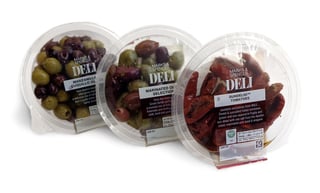
There are different Anilox engravings specific to the application of high opacity whites in the market. However extensive trails have demonstrated that easyflo HD engraving (Fig. 7) is the engraving that achieves by far the highest density. This high-release engraving features a 30 degree angle with an open and linked cell design. Channel engravings have been accepted for many years as a proven way of improving ink flow within the Anilox reducing excessive foaming which will result in pin holing on the printed substrate (Fig. 8).
Recommended cell volumes for achieving the highest opacity possible with a high opacity white UV ink range from 25 cm3 /m2 –40 cm3/m2. However specific cell volumes will need to be assessed on an individual basis based on your print conditions. A good starting point would be to check the opacity level achieved with any of your high volume Anilox rollers or conduct a banded Anilox trial if the results were nowhere near your opacity target.
Another important aspect to consider is the surface tension of the substrate. Most of films used in printing have a very low surface tension which will make difficult the inking of these substrates. To obtain sufficient wetting and adhesion on plastic films, pre-treatment just before the application of whites is necessary. The treatment of any film will dramatically alter the surface tension and will enable the ink to wet out and adhere to the surface.
It will be also wise to discuss with your plate supplier the options available regarding plate types as this can make a real difference to the opacity level achieved. Combining EasyFlo HD with texturised solid plates will improve significantly the ink transfer efficiency and increase the opacity.
If you are applying white to an uncoated substrate or carton, then you should consider larger cell engravings such as MaxFlo and volumes ranging from 20-30cm3/m2.
For applications of white solvent based inks on plastic substrates, MaxFlo+ has proven to outperform all other engraving types available achieving high opacity levels equal to Gravure printing. The screen specifications will depend on your particular print conditions however a volume range of 15-18cm3/m2 volume has yield outstanding levels of opacity in flexible packaging.
Quick Reference Guide To Anilox Engraving Variations & Applications
| COMMON ENGRAVING TYPE | DESCRIPTION | NOTES |
 |
Conventional 60 deg hexagonal | Used in most general Flexographic print applications with Solvent, Water & UV based inks. Releases approximately 60% to 70% of true theoretical volume of Ink |
 |
Maxflo & Maxflo HD | 72 to 75 deg angle but with elongated cell pattern. Vastly more efficient at releasing ink, allows use of finer engraving without loss of colour density. |
 |
Easyflo & Easyflo HD | Developed for UV inks to improve ink laydown and reduce spitting from doctor blade. Reduces pin holing & Transfers up to 15% more than conventional 60deg patterns. |
 |
Twinflo | Raised areas between the cells support the doctor blade providing an open cell structure for increased ink or coating laydown. Ideal for adhesives , glue, varnish & Cold foil applications. |
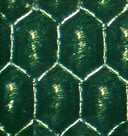 |
ProFlo | Proflo has been designed for ultrafine screen specifications. It features a new improved cell profile that will provide a more consistent ink lay down while also eliminating the chance of uncontrolled dot gain. This high-release cell offers as much as fifteen percent additional ink compared to conventional engravings allowing printers to achieve high colour densities at extremely fine linecounts. |
For more detailed information including Volume charts please contact Focus label machinery.
Specialty Inks And Coatings
Printers and their customers are always looking for new ways to add value and create highly innovative and striking packaging designs for a maximum shelf impact. Specialty inks, such as fluorescent, photo chromatic, metallic and pearlescent are on high demand by flexo printers and we frequently get asked for the best Anilox to use.
For the best results is essential that you convey as much information as possible about the ink and its application to your Anilox supplier.
Vital information that needs to be known is the particle size. A good rule of thumb is to keep the cell opening a minimum of twice the size of the largest particle size. Once the minimum opening has been determined, the cell volume needs to be assessed. This will be chosen in relation with the minimum dry coat weight recommended by the ink supplier for the desired print effects. It is important to understand that heavy volumes of highly pigmented ink do not work well. High volumes require deep engravings which will make the evacuation of the ink pigments more challenging and the cells will easily plug. Choosing an open engraving will improve the ink release as an open cell structure will have a shallower depth which will promote ink transfer.
For specialist inks we always recommend TwinFlo This engraving features raised “posts” between the linked cells that support the doctor blade while the double channel screen provides a more open structure that increases the ink laydown. TwinFlo has proven to be highly effective improving the coverage and finish of metallic, pearlescent, fluorescent and other specialist inks.
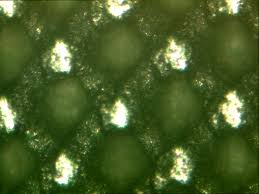
This engraving is also recommended for applications of laminates, adhesives and varnishes. It has proven to be very successful with the application of the new on-demand tactile varnishes.
Again in order to make the right recommendation your Anilox Supplier will need as much information as possible about the application. The main criteria will be target coat weight, percentage solids and the coating density. Knowing the application method will also be necessary (gravure coating or standard flexo) and the doctoring method (two roll or chambered system).
Having a bench mark is also critical for the success of the Anilox recommendation. If you have tried any Anilox before and have measured the coat weight achieved this will be very useful information to have. Substrate type is another factor that will affect the final coat weight. The recommended volume for uncoated substrates will be higher than for non-porous or coated substrates.
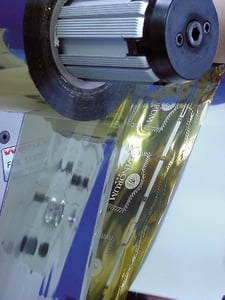
Doctor Blade:
The selection of the correct Doctor blade is a key element not only in maintaining print quality & Ink control but also in long term performance & care of your Anilox Roll. We recommend high performance lamella Steel, Synthetic & composite blades. The correct style & material will depend on the application and type of blade holding systems in place. We have produced some detailed technical reports which are available upon request.
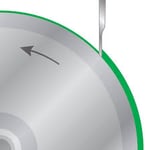
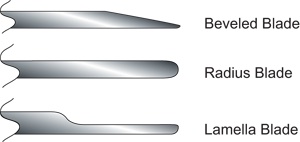
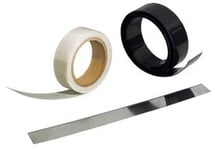
Anilox Care:
Never underestimate the importance of maintenance & care of your Anilox Roll.
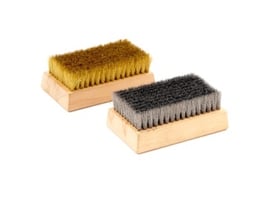
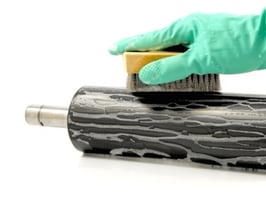
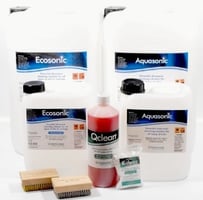
In order to maintain print quality a regime of strict maintenance & cleaning will be required to ensure consistent results. In addition to regular manual cleaning with a range of safe solvents there is automated equipment such as Ultrasonic & Soda blast system which can provide a much deeper clean. These systems should be used sparingly. Please refer to a separate technical document for additional details.
